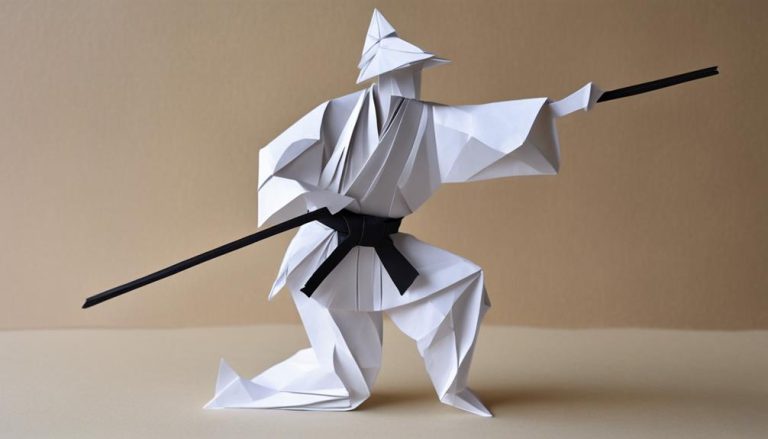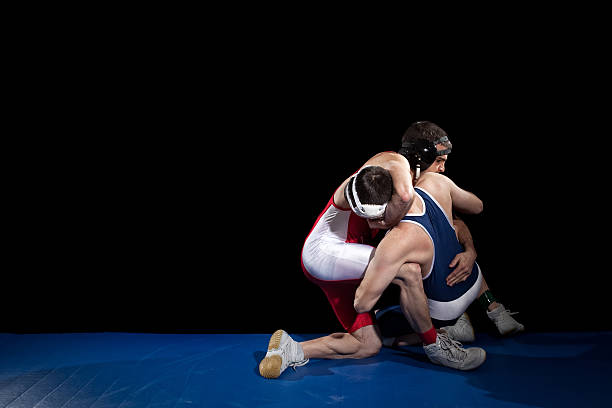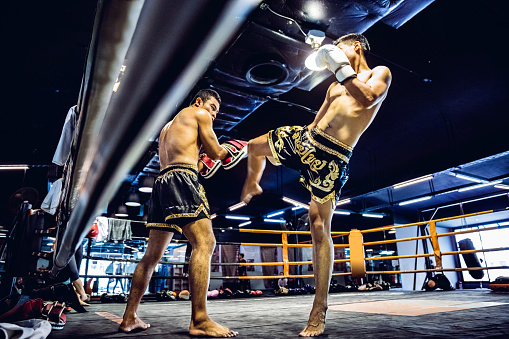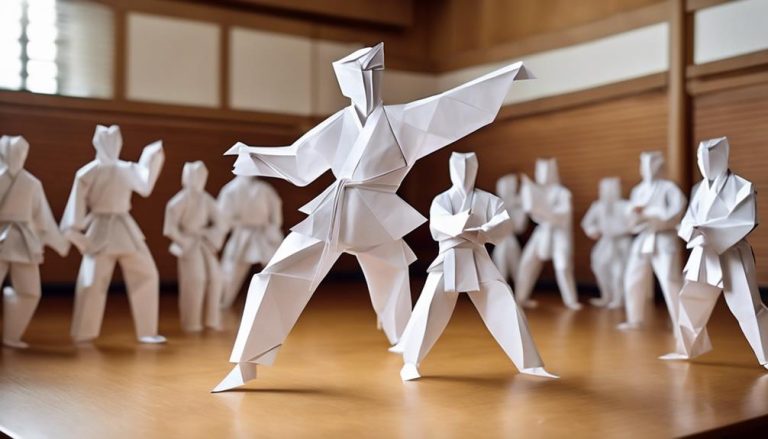General Rules of Wushu
In this article, we will provide you with a concise overview of the scoring system, techniques and forms, equipment and attire, competition categories, performance requirements, as well as the rules and regulations of this ancient Chinese martial art.
So, get ready to dive into the world of wushu and enhance your understanding of this fascinating discipline.
Scoring System
You should understand the scoring system in Wushu competitions. The scoring system in Wushu is based on the performance of various techniques and movements executed by the athletes. Each movement is evaluated by a panel of judges who assign scores based on specific criteria. The scores are then tallied to determine the final result.
In Wushu competitions, judges evaluate the athletes’ performance on a scale of 10 points. The judges assess the athletes’ execution of techniques such as kicks, punches, jumps, and stances. They also consider the athletes’ overall presentation, including grace, fluidity, and power.
The judges pay close attention to the precision and accuracy of the movements. They look for proper body alignment, correct timing, and control. Additionally, the judges consider the difficulty level of the movements performed by the athletes. Complex and challenging techniques receive higher scores.
To ensure fairness and consistency in scoring, multiple judges assess the same performance. The highest and lowest scores are often discarded, and the remaining scores are averaged to determine the final score.
Understanding the scoring system in Wushu competitions is essential for athletes, coaches, and spectators. It allows everyone involved to appreciate the technical skill, artistry, and athleticism displayed by the performers.
Techniques and Forms
To fully understand Wushu, it’s important to learn about the various techniques and forms used in this martial art. Wushu encompasses a wide range of techniques that emphasize both strength and grace. These techniques include kicks, punches, throws, and jumps, which are executed with precision and fluidity. The forms, also known as routines or taolu, are choreographed sequences of movements that showcase the practitioner’s mastery of different techniques.
In Wushu, there are two main types of forms: the Changquan and the Nanquan. Changquan, meaning long fist, emphasizes long-range techniques and fluid movements. It includes a combination of high jumps, kicks, and acrobatic movements. Nanquan, on the other hand, focuses on close-range combat and swift movements. It emphasizes quick footwork, low stances, and powerful strikes.
In addition to these two main forms, Wushu also includes various weapon forms, such as the sword, staff, and spear. These weapon forms require not only skill in wielding the weapon but also mastery of the fundamental techniques.
Equipment and Attire
When participating in Wushu, it’s essential to have the proper equipment and attire for optimal performance. Wushu is a highly disciplined martial art that requires practitioners to have the right gear to ensure safety and effectiveness during training or competition.
First and foremost, it’s crucial to have a proper uniform. The standard Wushu uniform consists of a loose-fitting top called a ‘tunic’ and matching pants. The uniform should be made of lightweight and breathable material to allow for ease of movement. It’s typically black or white, with the option of incorporating team or club colors for competitions.
Additionally, a pair of comfortable and flexible shoes is necessary for practicing Wushu. These shoes should have a flat sole to provide stability and allow for quick movements. They should also be lightweight and have good traction to prevent slipping.
In terms of protective gear, a mouthguard is essential to protect the teeth and jaw during sparring or combat training. It’s also recommended to wear hand wraps or gloves to support and protect the hands and wrists.
Competition Categories
When it comes to competition categories in Wushu, there are a few key points to consider.
First, there’s a distinction between forms and sparring, with forms focusing on precise movements and sparring involving combat with an opponent.
Additionally, there’s a division between traditional and contemporary styles, with traditional forms emphasizing heritage and history, while contemporary forms incorporate modern innovations.
Lastly, competitions are often organized by age and gender divisions to ensure fair competition and safety.
Forms Versus Sparring
If you want to understand the differences between forms and sparring in Wushu competition, it’s important to consider the various categories.
Forms, also known as Taolu, are routines that showcase a practitioner’s skills in a pre-determined sequence of movements. These movements are judged based on criteria such as technique, difficulty, and presentation. Forms allow practitioners to demonstrate their proficiency in different styles and techniques.
On the other hand, sparring, also known as Sanda, involves direct combat between two practitioners. It focuses on applying techniques in a real-time, dynamic setting. Points are awarded based on strikes, throws, and takedowns. Sparring emphasizes speed, power, and strategy.
Both forms and sparring are integral parts of Wushu competition, catering to different aspects of the martial art and allowing practitioners to showcase their abilities in different ways.
Traditional Versus Contemporary
To truly understand the distinctions between traditional and contemporary competition categories in Wushu, you must consider the different elements and criteria that define each.
Traditional Wushu focuses on preserving the ancient martial arts techniques and forms passed down through generations. It emphasizes the cultural and historical aspects of Wushu, with movements that reflect traditional Chinese philosophy and aesthetics.
On the other hand, contemporary Wushu is more modern and dynamic, incorporating elements from various martial arts styles. It emphasizes athleticism, acrobatics, and speed, with choreographed routines that showcase flexibility and power.
In competition, traditional Wushu is judged based on accuracy, grace, and adherence to classical forms, while contemporary Wushu is evaluated on difficulty, execution, and artistic expression.
Both categories require discipline, skill, and dedication, offering practitioners different avenues to express themselves through the art of Wushu.
Age and Gender Divisions
For participants in Wushu competitions, age and gender divisions serve as important categories to ensure fair and balanced competition. These divisions are established to create a level playing field and promote equal opportunities for all competitors.
In Wushu, age divisions are typically divided into categories such as children, youth, adults, and seniors. Each category allows participants to compete against others within their age group, ensuring that they’re competing against individuals of similar physical capabilities and experience levels.
Gender divisions, on the other hand, separate competitors based on their biological sex, with separate categories for males and females. This ensures that participants are competing against others of the same gender, taking into account any inherent physiological differences.
Performance Requirements
You should definitely demonstrate your agility and precision when performing Wushu. As a practitioner of this martial art, it’s crucial to showcase your physical abilities and technical skills. Wushu performances require speed, strength, flexibility, and control.
When it comes to agility, you need to exhibit quick and nimble movements, seamlessly transitioning between various techniques. This includes executing jumps, kicks, spins, and flips with grace and accuracy. To enhance your agility, you can train in exercises that improve your balance, coordination, and footwork.
Precision is another essential aspect of Wushu performances. Your movements should be executed with great accuracy, hitting the targeted areas precisely and maintaining proper form throughout the routine. This requires practicing your techniques repeatedly and paying attention to fine details, such as hand positioning, body alignment, and timing.
In addition to agility and precision, you must also display strength and power in your movements. This includes generating explosive force during kicks and strikes, as well as demonstrating stability and control in various stances and poses.
To meet the performance requirements of Wushu, consistent training, discipline, and focus are necessary. By continually honing your skills and perfecting your techniques, you can showcase an impressive display of agility, precision, and overall mastery of this dynamic martial art.
Rules and Regulations
Follow the guidelines and regulations set forth by the governing body of Wushu to ensure fair and standardized competition. These rules and regulations are put in place to maintain the integrity of the sport and provide a level playing field for all participants.
One of the key rules in Wushu is the requirement of compulsory movements. These movements are predetermined and must be performed by all competitors in a specific event. They’re designed to showcase the fundamental techniques and skills of Wushu. Judges assess the execution of these compulsory movements based on criteria such as accuracy, power, and rhythm.
Another important rule is the prohibition of certain moves or techniques. These moves are considered dangerous or detrimental to the safety of the athletes. For example, strikes to the groin area or attacks that target vulnerable body parts are strictly forbidden. By enforcing these rules, the governing body ensures the participants’ well-being and prevents unfair advantages.
Additionally, competitors are required to wear appropriate attire during competitions. This includes the traditional Wushu uniform, which consists of loose-fitting pants and a top. The uniform should be clean and in good condition. Wearing any accessories or jewelry that may cause harm to oneself or others is strictly prohibited.
All participants must familiarize themselves with these rules and regulations to compete in Wushu events. By adhering to these guidelines, athletes can compete fairly and confidently, knowing that the competition is conducted in a standardized and unbiased manner.
Frequently Asked Questions
Are There Any Age Restrictions to Participate in Wushu Competitions?
Yes, there are age restrictions for participating in wushu competitions. These restrictions vary depending on the specific competition and category. It is important to check the rules and regulations of each competition to determine the age requirements.
Is It Mandatory to Have Prior Martial Arts Experience to Learn Wushu?
No, prior martial arts experience is not mandatory to learn Wushu. Wushu is open to all individuals, regardless of their previous training. Beginners can start from scratch and gradually develop their skills through proper training and practice.
Can Wushu Be Practiced as a Form of Self-Defense?
Yes, wushu can be practiced as a form of self-defense. It is a martial art that focuses on technique and agility, making it effective for defending oneself in real-life situations.
Are There Any Weight Categories in Wushu Competitions?
Yes, there are weight categories in wushu competitions. Competitors are grouped into different weight divisions to ensure fair competition. This allows athletes of similar size and strength to compete against each other.
Are There Any Specific Health and Fitness Requirements to Participate in Wushu Competitions?
Yes, there are specific health and fitness requirements to participate in wushu competitions. It is important to have good overall physical condition, strength, flexibility, and stamina to perform the required techniques and routines effectively and safely.
Conclusion
In conclusion, understanding the general rules of wushu is essential for practitioners and enthusiasts alike.
From the scoring system to techniques and forms, as well as equipment and attire, there are various aspects to consider.
Additionally, being aware of competition categories, performance requirements, and rules and regulations ensures a fair and standardized environment for all participants.
By following these guidelines, individuals can fully appreciate and engage in the art of wushu.






